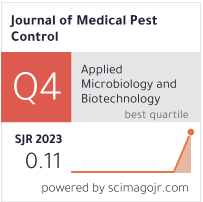Analysis of the monitoring results of iodine deficiency disorders among school stage children in Shijiazhuang City from 2017 to 2021
Abstract
Abstract
This study analyzes the monitoring results of iodine deficiency disorders (IDD) among school-age children in Shijiazhuang City from 2017 to 2021. Data on urinary iodine concentration, thyroid size, and goiter prevalence were collected through regular surveillance to assess the iodine nutritional status of the population. The results indicate that the overall iodine nutrition among children improved steadily during the study period, with urinary iodine levels generally within the optimal range recommended by the World Health Organization. The prevalence of goiter and other clinical signs of IDD declined significantly. However, localized areas with mild iodine deficiency were identified, highlighting the need for continued monitoring and targeted interventions. The study supports the effectiveness of iodine supplementation programs and provides valuable data for guiding future public health policies in Shijiazhuang.
Full text:
PDFReferences
Wang W., Ma Z., Zhang H., Guo J., Li W., Bai J.



